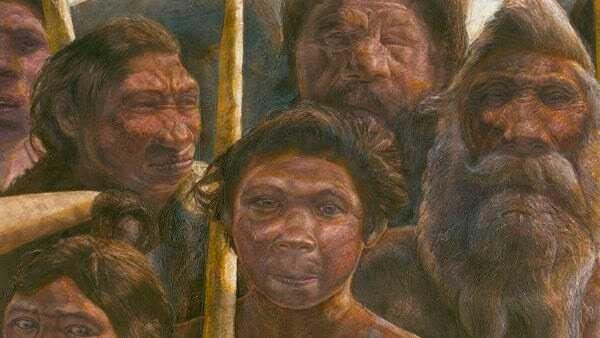The DNA of the Old Man, Hominim Sima is 400 thousand years old
Since the discovery of La Sima de los Huesos in 1990, the underground cave located in Northern Spain has produced six thousand fossils of 28 ancient human individuals.
Recently, researchers from the Max Planck Institute have succeeded in extracting and studying ancient human DNA, they almost completely determine the mitochondrial genome sequence which is representative of the Homonim genus 400 thousand years ago.
The genus Homo is derived from a fossil located on the site of the old northern Spanish cave, Sima de los Huesos, where the fossils found are closely related to the mitochondrial genome of Denisovans, one of the more extinct Neandetal Asian relatives.
#The DNA of the Oldest Man, Hominim Sima
Sima de los Huesos is a cave site in the northern region of Spain, an old cave that has made a major contribution to the fossil hominim world of the Middle Pleistocene.
At least the Spanish paleontology team led by Juan, has managed to dig more than 28 skeletons of ancient manusa individual and put together for more than two decades.


The fossils that were found to be classified as Homo Heidelbergensis but also carry the Neanderthal characteristic, and to date the DNA of this hominin man has yet to be learned.
Then Matthias Meyer's team from the Max Planck Institute joins Juan's team of digging fossils, they have developed new techniques to retrieve the degraded ancient human DNA.
The collaboration of this study sampled two grams of hominim bone powder from an old Spanish cave, then DNA extracted and sequenced mitochondrial or mtDNA genomes.
A small number of genomes are lowered along the maternal line and there are many copies of the cell, then the researchers compare mitochondrial DNA with ancient human DNA such as Neandethal, Denisovans, apes and humans today.
From this it is known that Homonim Sima lived about 400 thousand years ago, they are also the same ancestors with Denisovans, an ancient group extinct from Asia and associated with Neanderthals about 700 thousand years ago.
The fact of this study suggests that Hominim mtDNA Sima de los Huesos is the same ancestor as Denisova because of the fossil that carries the features that are derived Neanderthals.
According to Matthias Meyer, most likely the age of Hominim Sima is related to the ancestral populations of Neandertal and Denisovans, another possibility that the flow of genes of other groups has brought Denisovans to Hominim Sima.
This hypothesis is increasingly confusing because there are several possibilities that the fossil has a lineage that serves as the ancestor of both genera, Neanderthal and Denisovans.
Or more likely the hypothesis is like this, one genus comes after the split between the two groups that occurred about a million years ago and is linked to the last genus but not the first offspring.
A third hypothesis could be that the similarity with the genus Denisovan (mtDNA) is explained by marriage or the presence of hominim offspring that Denisovan grew up in Sima de los Huesos, then introducing the same mtDNAs in both groups.
If so, then this lineage is getting more complicated and that the genus in the cave of Sima de los Huesos does not live alone.
As tested on Denisovan's fossilized fossil bone in Siberia, the researchers found mtDNAs sharing with modern humans living in New Guinea.
Meanwhile, previous research states that Neanderthals have settled in Europe and Denisovan is expected to move to the East, the other side of the Ural mountains.